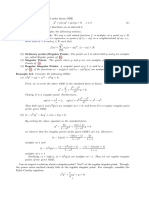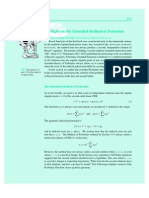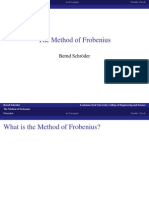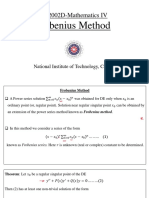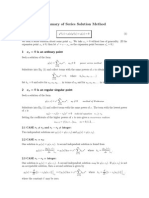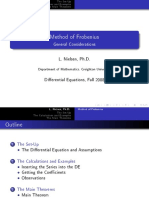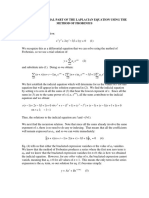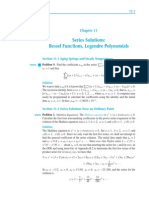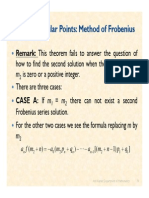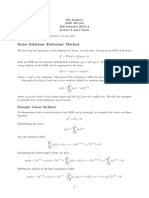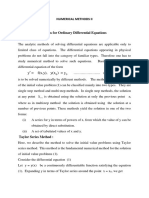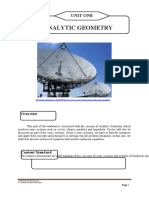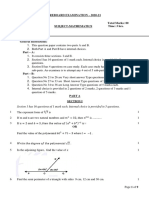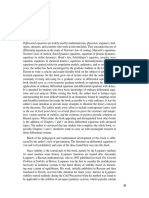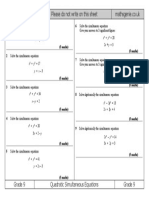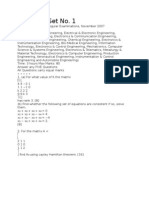0% found this document useful (0 votes)
238 views18 pagesThe Method of Frobenius: R. C. Daileda
This document introduces the method of Frobenius for solving ordinary differential equations (ODEs) with singular points. It first shows how assuming power series solutions can work even when coefficients are not analytic, using an example ODE. It then presents the general Frobenius method, which assumes power series solutions of the form xrΣanxn and determines r from the indicial equation. The method guarantees analytic solutions when coefficients satisfy certain limits at the singular point.
Uploaded by
Edrielle Ann PolicarpioCopyright
© © All Rights Reserved
We take content rights seriously. If you suspect this is your content, claim it here.
Available Formats
Download as PDF, TXT or read online on Scribd
0% found this document useful (0 votes)
238 views18 pagesThe Method of Frobenius: R. C. Daileda
This document introduces the method of Frobenius for solving ordinary differential equations (ODEs) with singular points. It first shows how assuming power series solutions can work even when coefficients are not analytic, using an example ODE. It then presents the general Frobenius method, which assumes power series solutions of the form xrΣanxn and determines r from the indicial equation. The method guarantees analytic solutions when coefficients satisfy certain limits at the singular point.
Uploaded by
Edrielle Ann PolicarpioCopyright
© © All Rights Reserved
We take content rights seriously. If you suspect this is your content, claim it here.
Available Formats
Download as PDF, TXT or read online on Scribd
/ 18


